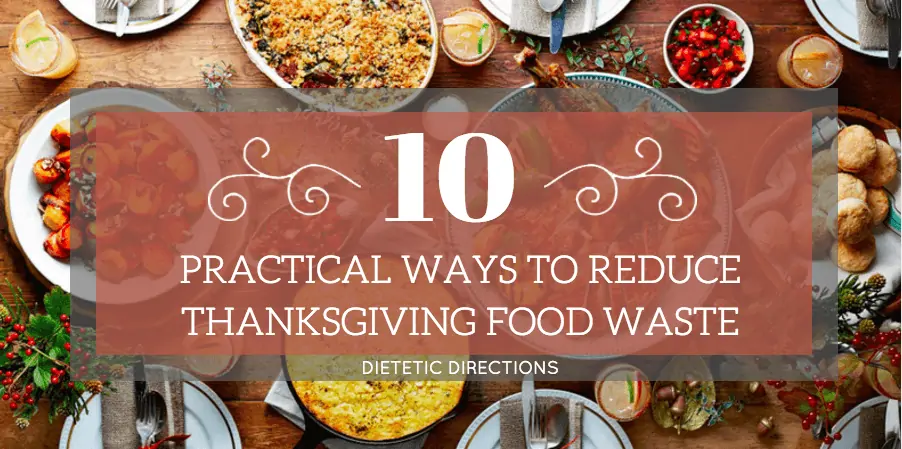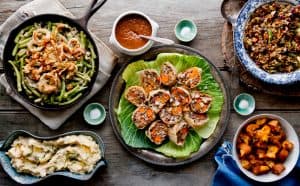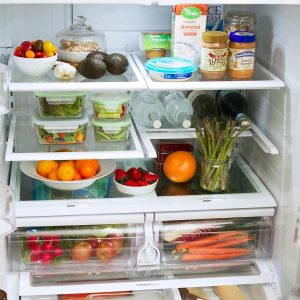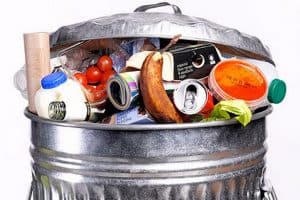
10 Practical ways to Reduce Thanksgiving Food Waste
When you think of thanksgiving, do you think of turkey, stuffing or merely the familiar feeling of being over-stuffed? These are common associations on this food-centric holiday. However, this year, I will focus on the 27 billion Canadian dollars lost each year in food waste, or the food that is discarded, lost or uneaten. This blog is intended to motivate us to be extra conscious during this time of bountiful harvest.

Andrea’s Top 10 Ways to Reduce Food Waste this Thanksgiving:
Find out 10 practical ways to reduce food waste this Thanksgiving! Share on X-
Take stock before you grocery shop:
This is the first and often most over-looked principle. Be aware what foods you have to use up before shopping. Apply the F.I.F.O principle (First In First Out) to ensure that you are using the old foods first.
-
Plan your meals:
Whether you are hosting a grand thanksgiving or cooking for two, planning your meal in advance reduces impulse buys so that you will be buying only what you need. When you have your plan, write out a grocery list before hitting those grocery aisles.
-
Avoid buying in bulk (or portion if you do):
Research supports that the larger the portions we buy, the more we consume and likely waste. Therefore, be sure to portion bulk purchases like meats or vegetables into smaller quantities that can be frozen for another occasion.
-
Estimate your guests’ consumption:
Cook with a clear estimate for how much people will realistically consume. I recommend 1 pound of turkey (or less) per person and an estimate of approximate ½ cup per person for each of the starchy side dishes like potatoes, stuffing, peas, corn etc.
-
Know how long the food lasts:
Thanksgiving leftovers are guaranteed. Therefore, it is important to know how long foods will last in the fridge or freezer. For example, turkey can be stored in the fridge for 3-4 days; frozen for 4-6 months.
-
What can guests bring?
To prevent excess waste, be clear on what foods guests can bring. You might be in need of dessert or perhaps an extra salad or vegetable dish. If you are planning on having a 5 course meal prepared, you might simply ask your guests to just bring storage containers for leftovers! Communicating what you need (or don’t need) will help reduce the excess.
-
Get creative with leftovers:
Leftover meats can be shredded, frozen and then incorporated into casseroles, quesadillas, wraps, soups, or on top of salads. Leftover fruits can be added to smoothies or popsicles; overripe bananas or sweet potatoes can be used in baking (banana bread/muffins). Extra veggies can be added to make sauces, soup, stews that can be frozen. Leftover bread can be used to make breadcrumbs, French toast, croutons, bruschetta, crostini or bread pudding. Do not be shy to freeze meals that you made with leftover ingredients.

-
Smaller plates:
Plate waste occurs when people serve themselves more than they can comfortably consume. Therefore, to control the amount people serve themselves, use smaller plates (8-10”) and use smaller serving utensils – this will subtly decrease amounts that people serve themselves. Your guests can go back for extras as desired but will be less likely to toss away the green bean casserole they didn’t end up liking!
-
Compost scraps:
Scrap foods can be composted instead of tossing into the regular garbage. This helps return valuable nutrients to the soil and reduces landfill waste.
-
Donate excess packaged food
Extra canned goods can be donated to your local food bank or you can make a monetary donation online. Give thanks by giving to others in need.
Bottom Line:
This thanksgiving (and every day), let’s embrace my grandmother’s motto “waste not, want not”. By being a conscious eater this thanksgiving, you will be able to enjoy the bountiful harvest and be resourceful with our food.
How will you do your part?






